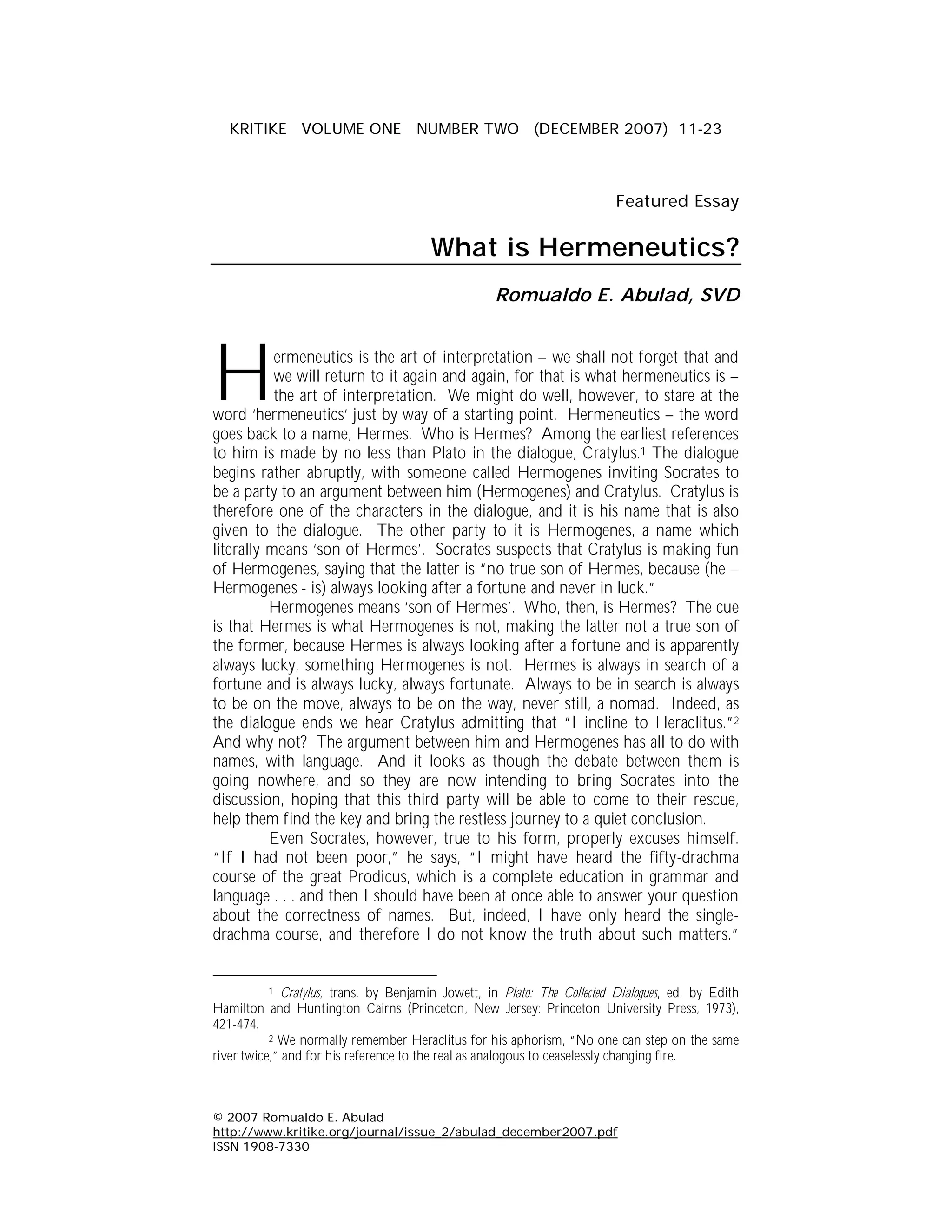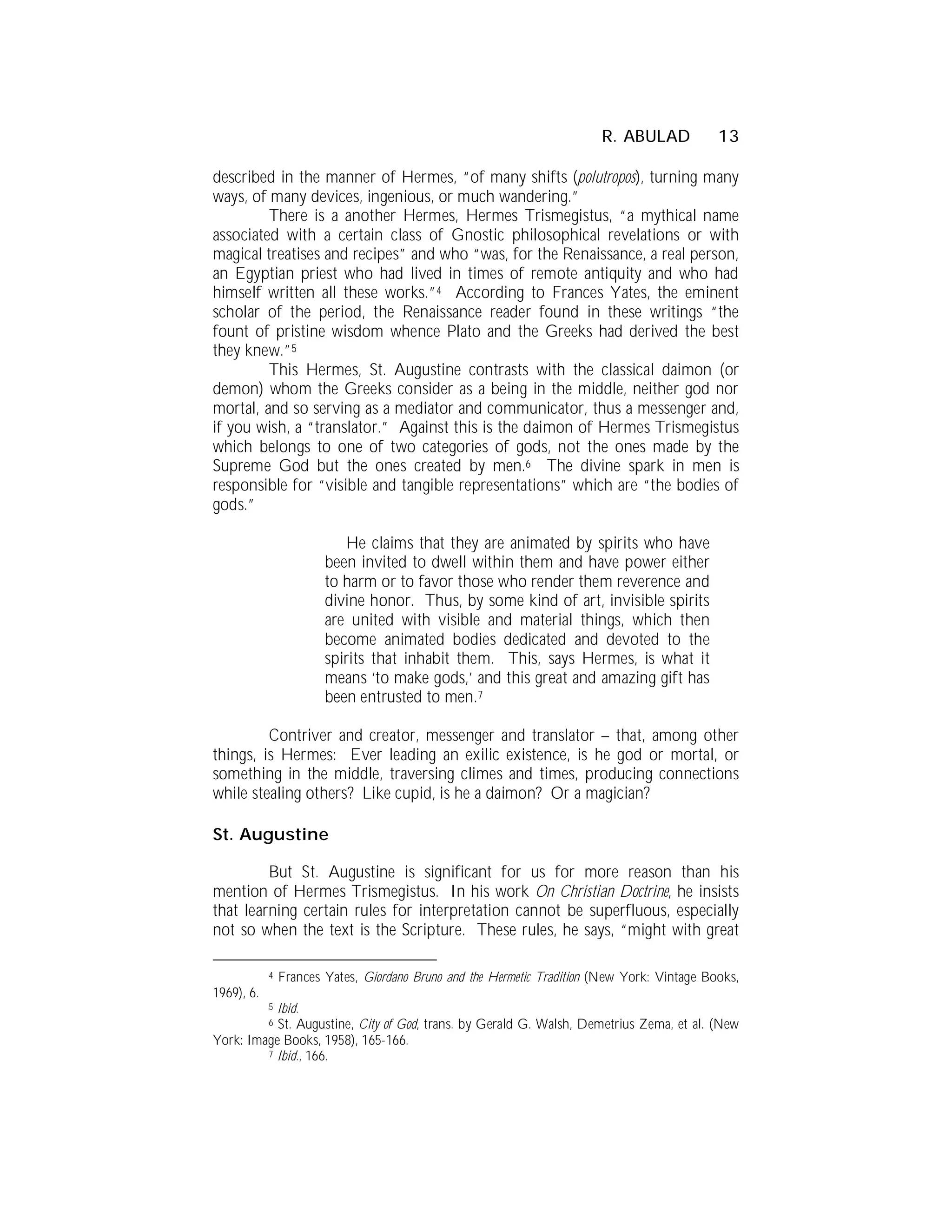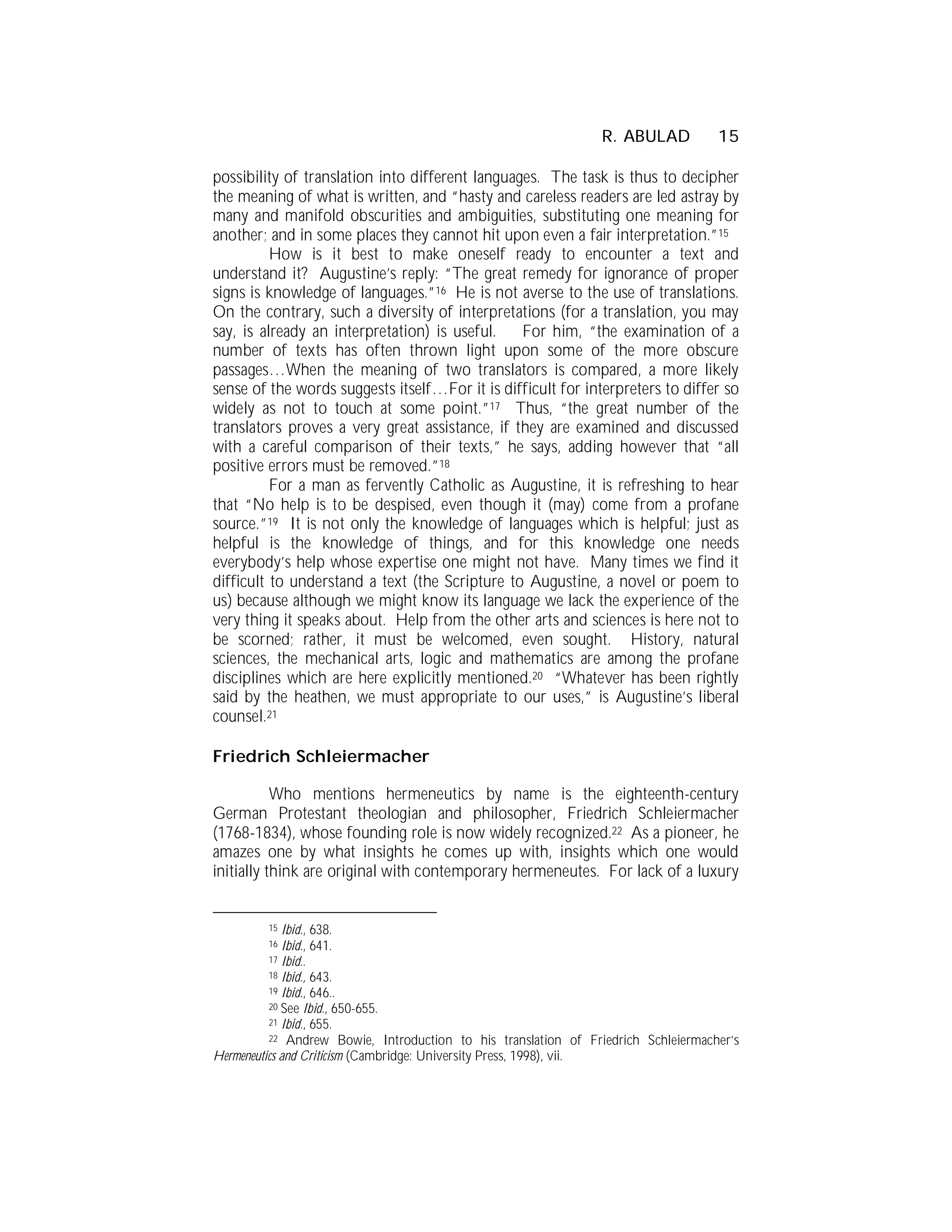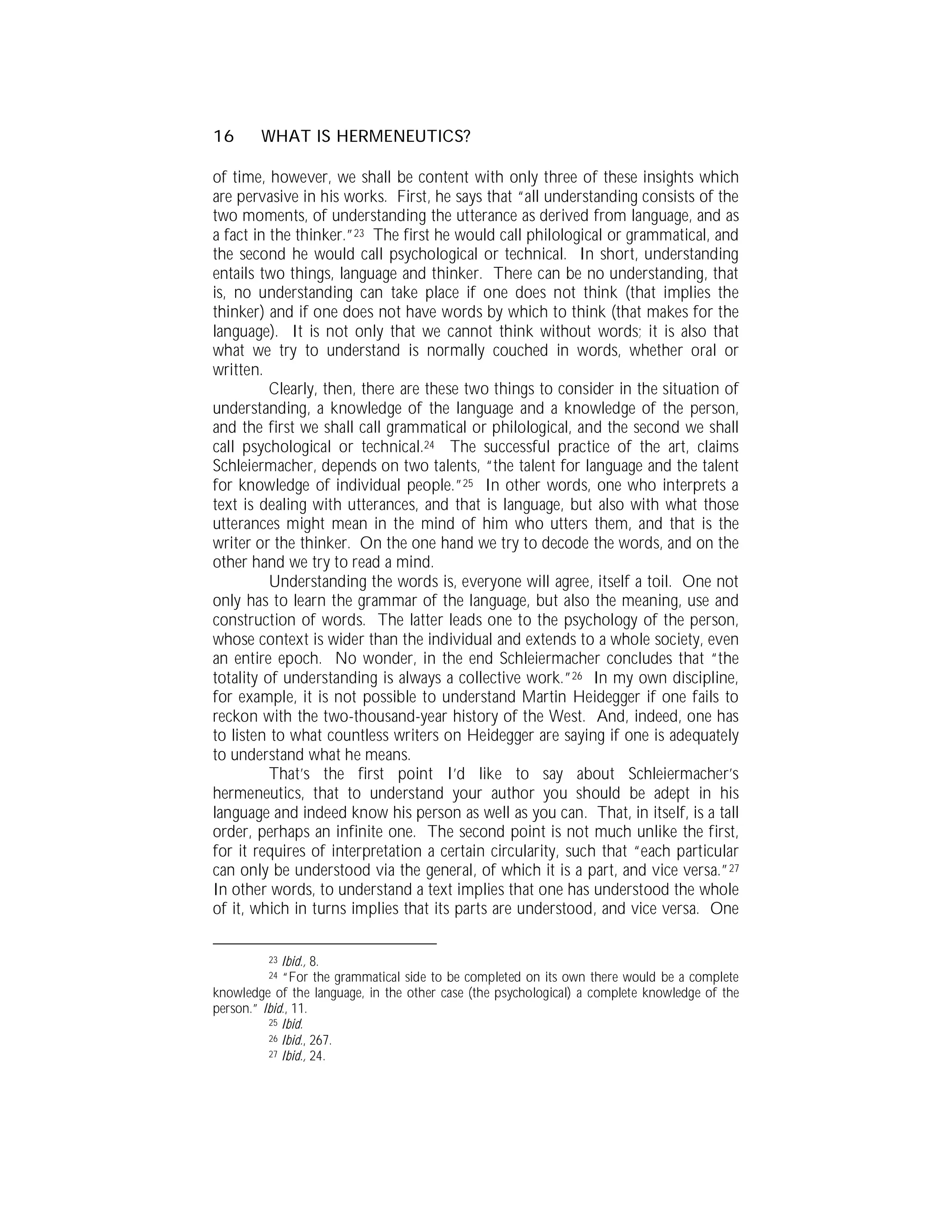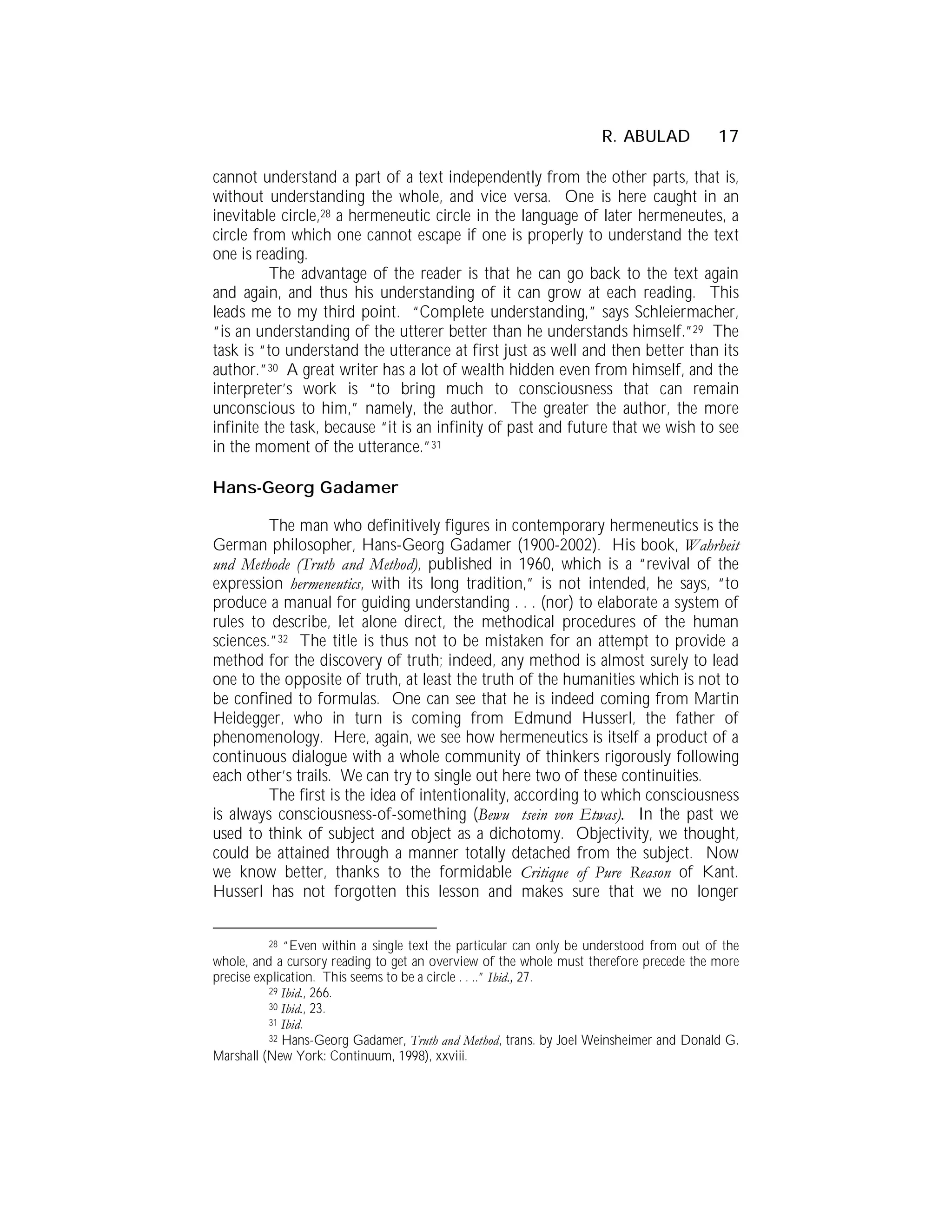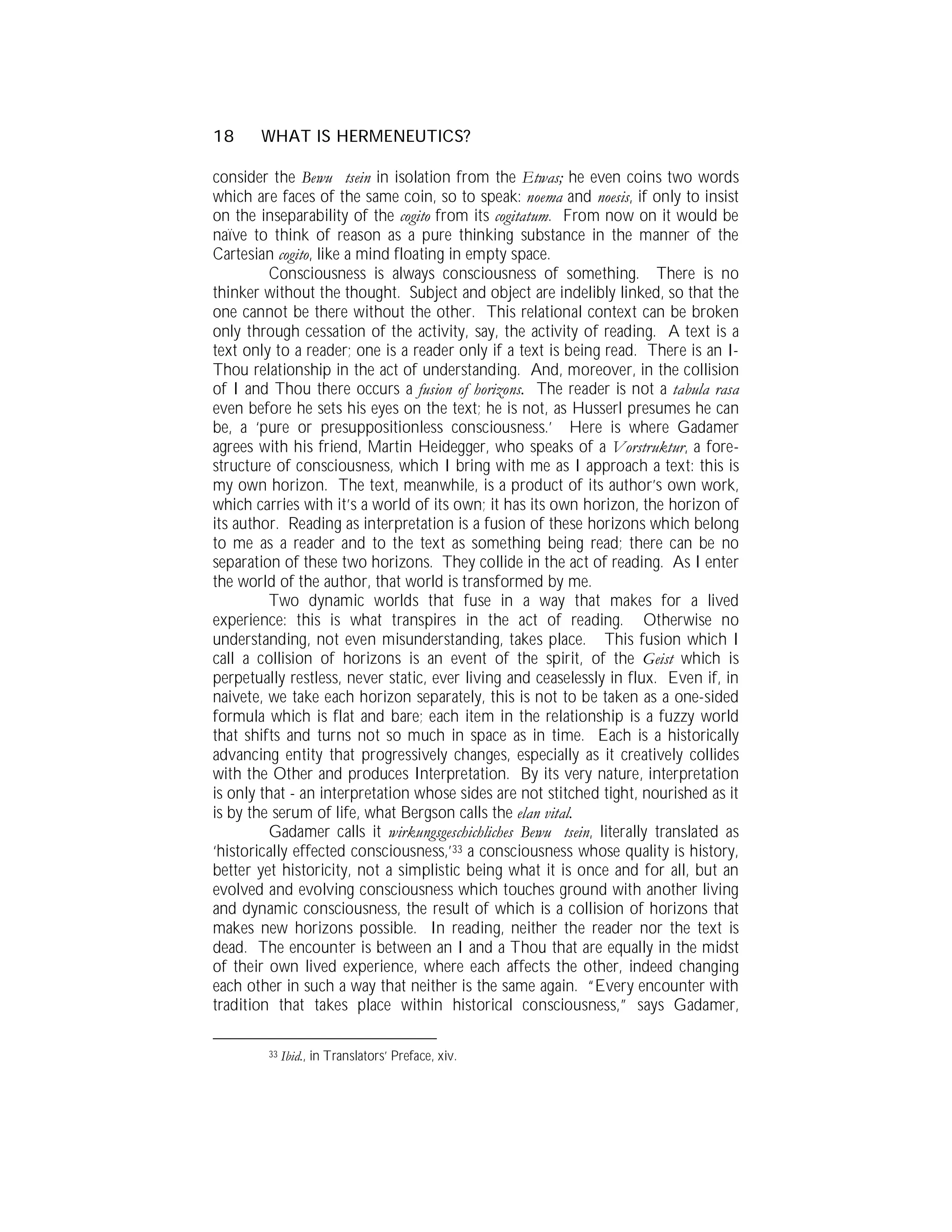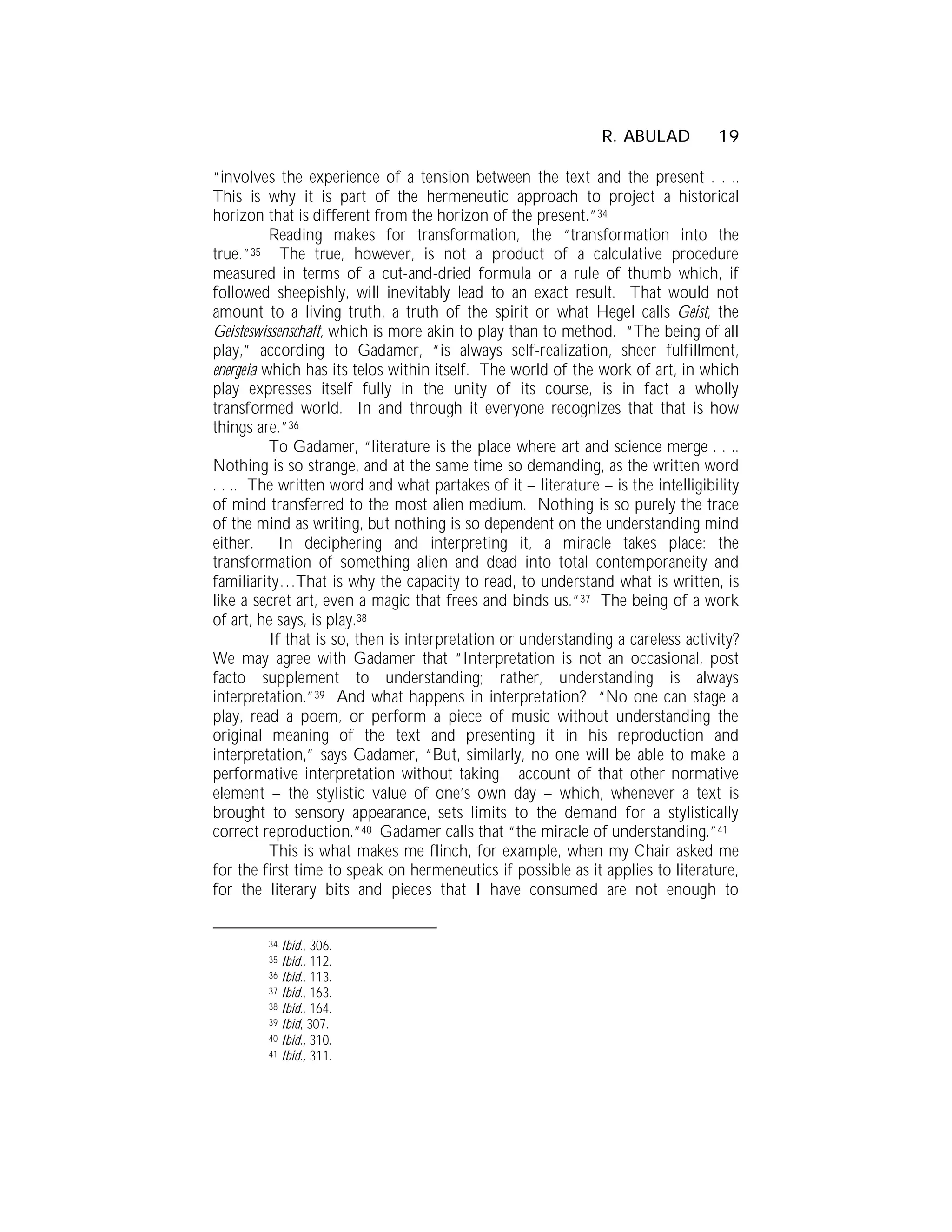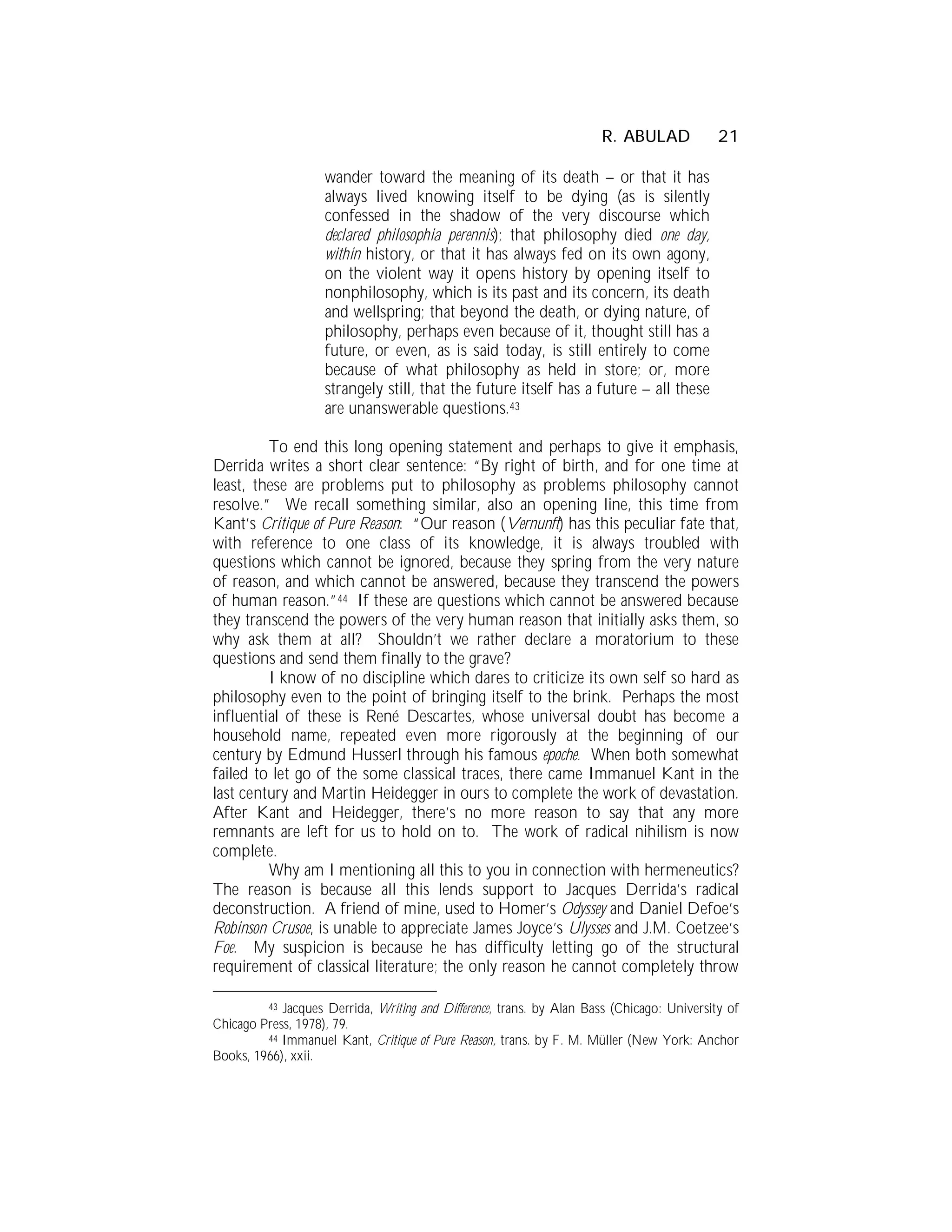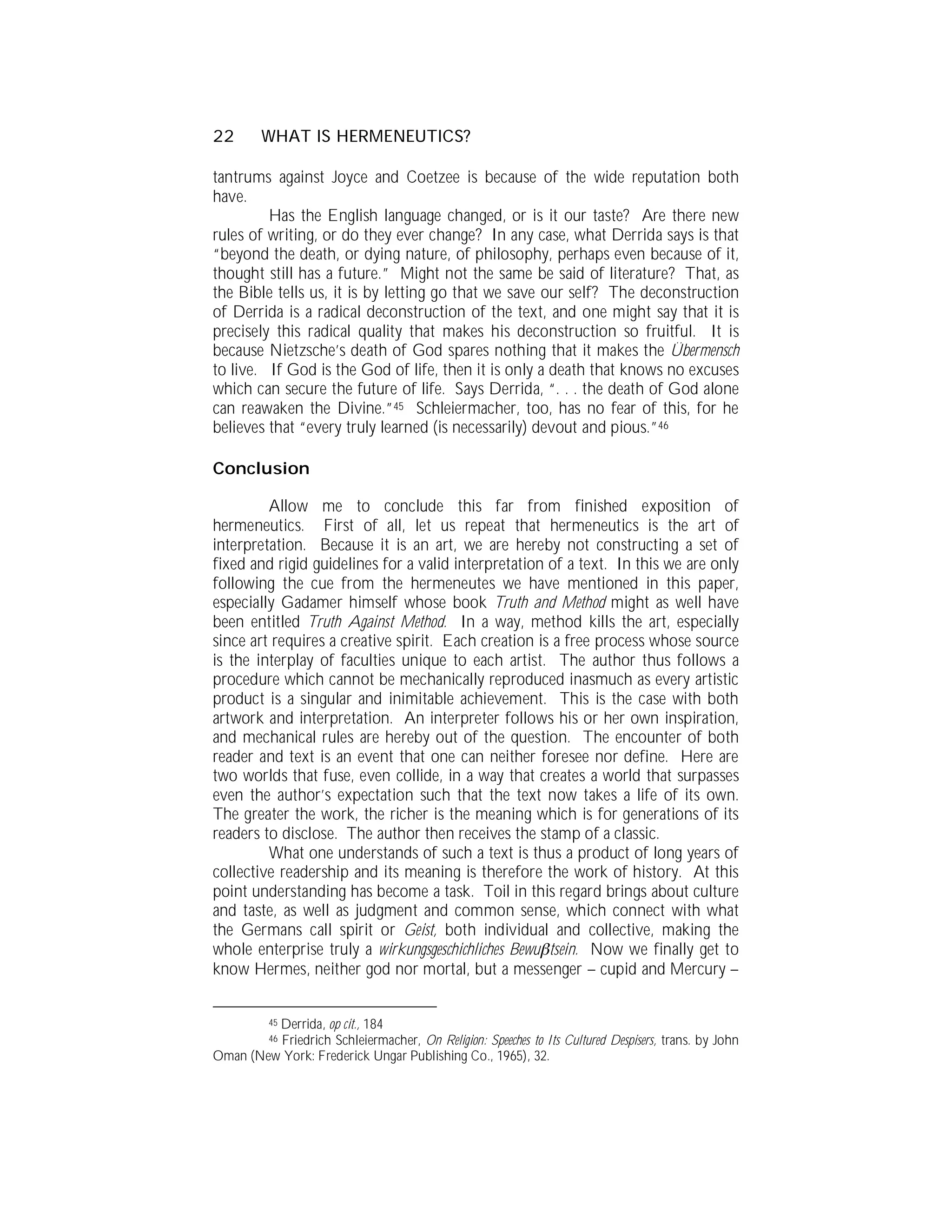This document provides an overview of the concept of hermeneutics. It discusses the origins and meaning of the word hermeneutics, tracing it back to the Greek god Hermes. It examines how figures like Plato, St. Augustine, and Friedrich Schleiermacher contributed to the development of hermeneutics. Key points include: Hermeneutics is the art of interpretation; Plato associated Hermes with language and speech in his dialogue Cratylus; St. Augustine discussed rules for interpreting texts, especially scripture; Schleiermacher recognized understanding requires considering both language and the thinker who uses that language.
